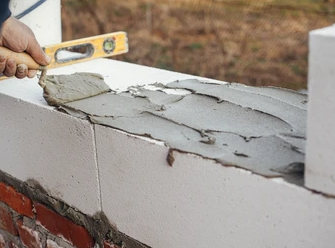The increase in volume observed after adding cellulose ether, such as Hydroxypropyl Methylcellulose (HPMC), to mortar can be attributed to several factors related to the unique properties of cellulose ethers:
Water Retention:
Cellulose ethers, including HPMC, are known for their excellent water retention properties. When added to mortar, they can absorb and hold water, preventing it from evaporating too quickly. The retained water contributes to the overall volume of the mortar, making it more workable and easier to apply.
Improved Workability:
Cellulose ethers act as rheology modifiers, enhancing the workability of the mortar. They improve the consistency and spreadability of the mixture, allowing for better coverage and adherence to surfaces. The improved workability can lead to a mortar mix with a more open structure, contributing to an increase in volume.
Thickening Effect:
Cellulose ethers function as thickening agents, increasing the viscosity of the mortar. This thickening effect can contribute to a more stable mixture that resists settling and segregation. As a result, the mortar maintains a consistent volume throughout the application process.
Reduced Shrinkage:
Cellulose ethers can help reduce shrinkage in mortar. Shrinkage occurs as water evaporates during the drying and curing process. By retaining water and controlling the rate of evaporation, cellulose ethers contribute to minimizing shrinkage, resulting in a mortar with a more stable volume.
Air Entrainment:
Some cellulose ethers, depending on their specific formulation, can entrain air into the mortar mix. Air entrainment enhances the workability, freeze-thaw resistance, and durability of the mortar. The introduction of air bubbles can contribute to an increase in the overall volume of the mortar.
Improved Adhesion:
The presence of cellulose ethers can improve the adhesion of the mortar to various surfaces. Better adhesion ensures that the mortar effectively bonds to substrates, contributing to the overall volume and structural integrity of the finished application.
It’s important to note that the specific impact on volume can vary based on factors such as the type and concentration of cellulose ether used, the overall mortar formulation, and the application method. The addition of cellulose ether is typically done to enhance the performance of the mortar by improving workability, adhesion, and other key properties, which can indirectly contribute to an increase in volume.


